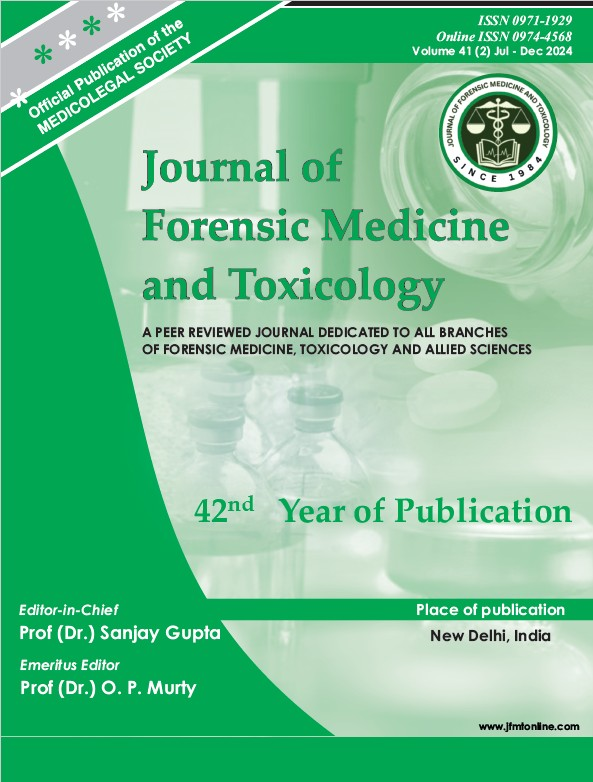A DEMOGRAPHIC STUDY ON DEATH DUE TO SUICIDE IN A TERTIARY CARE CENTRE IN RURAL WEST BENGAL.
Keywords:
Suicide, Demography, Hanging, Poisoning, Burn Injury, RuralAbstract
Suicide is a silent epidemic which affects all the ages of population irrespective of gender. The major underlying causes are variable and multifaceted which differ in age groups. Failure in the examination, failure in love affairs, and failure to enjoy freedom are major ones in the child and young adult age groups. Divorce, demand for dowry, unwanted pregnancy, a failed marriage, domestic violence, inability to conceive, and conflicts resulting from extramarital affairs constitute the major cause of suicides in females. A demographic study was conducted in a tertiary care hospital and medical college situated in rural West Bengal to estimate the burden of suicide in the community catchment area of the jurisdiction. In one year of period, a total of 608 cases of suicidal deaths were reported of which the majority were male population and from the Hindu community. Hanging, poisoning, and burn injury were found to be the major causes of suicidal death and a few cases of drowning were also reported. Hanging was more prevalent than other causes of suicide. The highest frequency of suicidal death was found in the age group of 21 to 30 years of age followed by 31 to 40 years of age. This substantial loss of human life in the active years of working indicates the severity and gravity of the problem existing in society.
Downloads
References
Mohanty S, Sahu G, Mohanty MK, Patnaik M. Suicide in India–A four year retrospective study. Journal of forensic and legal medicine. 2007 May 1;14(4):185-9.
Khan FA, Anand B, Devi MG, Murthy KK. Psychological autopsy of suicide—a cross-sectional study. Indian journal of psychiatry. 2005 Apr;47(2):73.
Kumar S, Verma AK, Bhattacharya S, Rathore S. Trends in rates and methods of suicide in India. Egyptian Journal of Forensic Sciences. 2013 Sep 1;3(3):75-80.
Vijaykumar L. Suicide and its prevention: The urgent need in India. Indian journal of psychiatry. 2007 Apr 1;49(2):81-4.
Radhakrishnan R, Andrade C. Suicide: an Indian perspective. Indian journal of psychiatry. 2012 Oct;54(4):304.
Ryan A. India’s Mental Health Epidemic: Deteriorating Amidst the Pandemic. CALL FOR PAPERS. 2021:8.
Venkatesh BT, Andrews T, Mayya SS, Singh MM, Parsekar SS. Perception of stigma toward mental illness in South India. Journal of family medicine and primary care. 2015 Jul;4(3):449.
Cui RJ. An Examination of the Relationship between Gender and Coping Mechanisms. In2022 International Conference on Social Sciences and Humanities and Arts (SSHA 2022) 2022 Apr 8 (pp. 709-712). Atlantis Press
Morris P, Maniam T. Ethnicity and suicidal behaviour in Malaysia: A review of the literature. Transcultural Psychiatry. 2001 Mar;38(1):51-63.
Evenson RC, Wood JB, Nuttall EA, Cho DW. Suicide rates among public mental health patients. Acta Psychiatrica Scandinavica. 1982 Sep;66(3):254-64.
ElHak SA, El-Ghazali AM, Salama MM, Aboelyazeed AY. Fatal suicide cases in Port Said city, Egypt. Journal of forensic and legal medicine. 2009 Jul 1;16(5):266-8.
Vijaykumar L. Suicide and its prevention: The urgent need in India. Indian journal of psychiatry. 2007 Apr 1;49(2):81-4.




